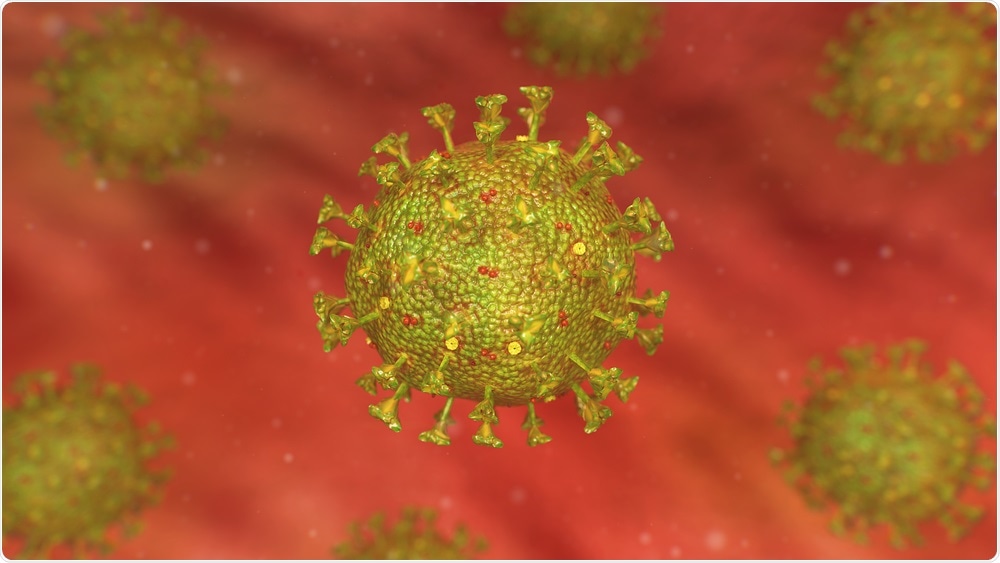The severe acute respiratory syndrome coronavirus 2 (SARS-CoV-2), which is the causative agent of the coronavirus disease (COVID-19), is highly contagious due to its ability to deceive the immune system. In a healthy individual, the immune system does not attack the host proteins. Comparatively, upon entry into the host, SARS-CoV-2 incorporates certain protein motifs that mimic the host protein, thus fooling the host immune system.
A new study published in Scientific Reports identifies the human proteins that share structural similarities with the SARS-CoV-2 proteins. The researchers also discuss the possible implications of these structural similarities during SARS-CoV-2 infection and disease progression.
 Study: Homology between SARS CoV-2 and human proteins. Image Credit: tonecgi / Shutterstock.com
Study: Homology between SARS CoV-2 and human proteins. Image Credit: tonecgi / Shutterstock.com
Structural homology and mimicry
Structural homology refers to the three-dimensional (3D) shape similarity between proteins and can be the result of amino acid sequence homology. Pathogens are known to mimic certain host proteins to evade immune invasion.
During its evolution, SARS-CoV-2 has borrowed some short protein sequences that are seven or eight amino acids long from various hosts, the most likely of which include bats or other mammals. Any motif which the immune system considered as self was suitable for borrowing. Subsequently, the virus simulates human proteins and slows down the immune response.
Nevertheless, there is an immune response to SARS-CoV-2. Even after viral clearance from the host system, the immune system directed against the viral proteins continues to target self-proteins that ultimately cause an autoimmune response to ensue.
Therefore, it is important to understand the homology between the SARS-CoV-2 and human proteins. This will help to understand mechanisms of mimicry during infection and will also be useful in designing vaccines against SARS-CoV-2.
Identifying the homology between the viral and human proteins
The researchers took the protein sequences from Uniprot, which is an open-access protein database, and used a computer program named Ouroboros, which they had designed. This program was used to compare the SARS-CoV-2 proteome with 75,777 human proteins.
The algorithm compared primary sequences of SARS-CoV-2 and human proteins that were represented by the one-letter amino acid code. This program then took into account the common 7-/8-mers and their fusion into longer sequences. In particular, the researchers were interested in proteins involved with digestion, olfaction, and taste, as these three bodily functions are often affected in COVID-19.
Homology between SARS-CoV-2 and human proteins
In the SARS-CoV-2 spike (S) protein, the researchers identified more than two dozen 7- and 8-mers that were homologous to human proteins. These n-mers are scattered throughout the length of the S protein, some of which were found to fuse into longer sequences. Moreover, 25 n-mers project from the virus particle and are presented to the immune system. Therefore, these proteins may be involved with mimicry that can mislead the immune system.
The 8-mer located in the cytoplasmic tail of the S protein is homologous to an 8-mer in human unconventional myosin-XVI and may be responsible for orchestrating an immune response against the homologous human 8-mer. This is possibly the reason for the muscle dysfunction that can occur after contracting COVID-19.
Likewise, the 8-mer from an uncharacterized fragment of the S protein is homologous to an 8-mer in the human amiloride-sensitive sodium channel subunit alpha. This human protein is involved in salt taste perception; therefore, SARS-CoV-2 may cause taste dysfunction because of the immune attack on this protein.
The envelope small membrane (E) protein of SARS-CoV-2 has eight n-mers that are homologous to human proteins, all of which are located in the transmembrane domain. These overlapping n-mers form a long 28-mer. Since the 28-mer is embedded within the transmembrane domain, it cannot be involved in mimicry. However, after the destruction of the virus, it is likely to provoke an autoimmune response.
All non-structural proteins of SARS-CoV-2 are present within the virus particle. As a result, these proteins cannot be involved in mimicry; however, they can possibly elicit an autoimmune response.
The researchers deduce that some SARS-CoV-2 nonstructural proteins like ORF3a, ORF7a, ORF7b, ORF8, and ORF9b may be involved in evoking autoimmunity. One 7-mer in ORF7b is homologous to a 7-mer in olfactory receptor 7D4, which may explain the olfactory dysfunction that occurs during SARS-CoV-2 infection.
Implications of homology
The researchers argue the involvement of homologous SARS-CoV-2 proteins in the process of mimicry and in provoking an autoimmune response. The observations discussed here may explain the reason for loss of taste and smell, as well as muscle weakness and pain that occurs after contracting COVID-19.
The researchers also present these homologous regions as potential drug targets so that the immune system is not deceived and the virus is destroyed shortly after the viral invasion. They also surmise that these drugs can destroy or block self-proteins, which can weaken the autoimmune response.